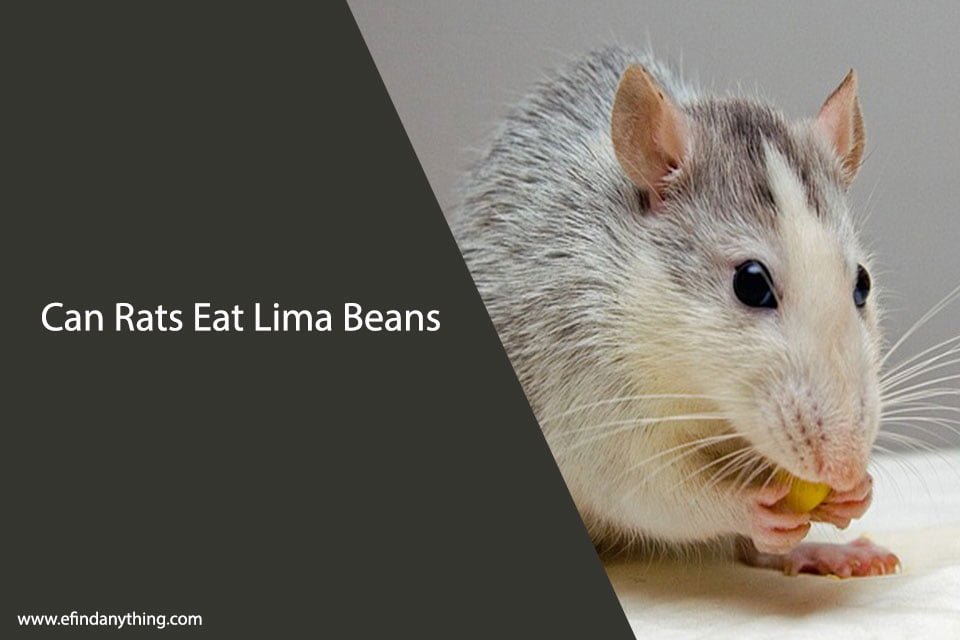Rat owners often wonder if it’s safe to share their favorite foods with their furry friends. One such food is lima beans, a healthy and nutritious legume. In this comprehensive guide, we will explore the question, “can rats eat lima beans?” and delve into the nutritional benefits, potential risks, and best practices for feeding lima beans to your pet rats. Read on to learn everything you need to know about incorporating lima beans into your rat’s diet.
Table of Contents
Introduction to Lima Beans
Lima beans, also known as butter beans, are a popular legume that originates from South America. They come in various sizes and colors, with the most common varieties being the large green and small white beans. Lima beans are rich in nutrients, making them a valuable addition to a balanced diet for both humans and animals. But can rats eat lima beans?

Nutritional Benefits of Lima Beans
Lima beans are an excellent source of essential nutrients for rats. Some of the key nutritional benefits of lima beans include:
Protein
Lima beans are rich in protein, which is crucial for the growth and maintenance of a rat’s body tissues. Rats require a diet that is approximately 15-20% protein to maintain optimal health.
Fiber
Fiber is essential for maintaining a healthy digestive system in rats. Lima beans are an excellent source of dietary fiber, which can help prevent constipation and promote regular bowel movements in your pet.
Vitamins and Minerals
Lima beans are packed with essential vitamins and minerals, such as iron, magnesium, potassium, and vitamins B1, B6, and C. These nutrients play a critical role in maintaining a rat’s overall health and well-being.
3. Potential Risks Associated with Feeding Lima Beans to Rats
While lima beans are generally safe for rats to consume, there are a few potential risks and precautions to consider before incorporating them into your pet’s diet.
Raw vs. Cooked Beans
Raw lima beans contain a natural compound called lectin, which can be toxic to rats if consumed in large quantities. Cooking the beans thoroughly will neutralize the lectins, making them safe for your rat to eat. Feeding your rats raw lima beans could lead to digestive issues, lethargy, and other health complications.
Choking Hazard
Whole lima beans can pose a choking hazard for smaller rats. To minimize this risk, you can choose to mash or chop the beans into smaller pieces before feeding them to your pet.
Allergies
Although rare, some rats may have an allergic reaction to lima beans. Monitor your rat closely after feeding them lima beans for the first time and look for signs of an allergic reaction, such as swelling, hives, or difficulty breathing. If you suspect your rat is allergic to lima beans, consult your veterinarian immediately.
Preparing Lima Beans for Your Rats
Proper preparation of lima beans is essential to ensure their safety and nutritional value for your rat. Follow these steps to prepare lima beans for your pet:
- Rinse the beans thoroughly under running water to remove any dirt or debris.
- If using dried beans, soak them in water for at least 4 hours or overnight to soften them.
- Drain the soaked beans and place them in a pot with fresh water.
- Boil the beans for at least 30 minutes to ensure they are fully cooked and the lectins are neutralized.
- Remove the beans from heat and allow them to cool completely before feeding them to your rat.
- Optional: Mash or chop the beans into smaller pieces to reduce the risk of choking.
Serving Size and Frequency
Lima beans should be fed to rats in moderation as a treat or supplement to their regular diet. A small serving (around one teaspoon) of cooked lima beans is appropriate for an adult rat. You can offer lima beans once or twice a week, but be sure to vary your rat’s diet with other vegetables, fruits, and protein sources to ensure they receive a well-rounded and balanced diet.
Alternatives to Lima Beans
If you prefer not to feed lima beans to your rat or if your rat doesn’t seem to enjoy them, there are plenty of other nutritious legumes and vegetables that you can incorporate into their diet. Some healthy alternatives to lima beans include:
- Green peas
- Chickpeas (cooked, unsalted)
- Lentils (cooked)
- Sweet potatoes (cooked)
- Carrots
- Broccoli
- Spinach
- Bell peppers (any color)
Other Foods to Avoid Feeding Your Rats
In addition to raw lima beans, there are several other foods that can be harmful or toxic to rats. Some foods to avoid feeding your rats include:
- Raw dry beans or peanuts
- Raw sweet potato
- Raw red cabbage and brussels sprouts
- Raw artichokes
- Green bananas
- Green potato skin and eyes
- Wild insects
- Rhubarb
- Orange juice (for male rats only)
Always consult your veterinarian or a reliable source before introducing new foods to your rat’s diet.
Monitoring Your Rat’s Health
It’s essential to monitor your rat’s health closely, especially when introducing new foods to their diet. Keep an eye on your rat’s behavior, appetite, and bowel movements to ensure they are adjusting well to the new addition. If you notice any changes in your rat’s behavior or health, consult your veterinarian immediately.

Conclusion
In conclusion, rats can safely eat lima beans as long as they are cooked thoroughly and fed in moderation. Lima beans provide numerous nutritional benefits for rats, such as protein, fiber, vitamins, and minerals. However, raw lima beans can be toxic to rats due to their lectin content, so it’s essential to cook the beans before feeding them to your pet. By following the guidelines outlined in this comprehensive guide, you can safely incorporate lima beans into your rat’s diet and provide them with a delicious and nutritious treat.
References
- Rat Health Guide: Nutrition
- Rat Care UK: Diet and Nutrition
- RatForum: Lima Beans for Rats





